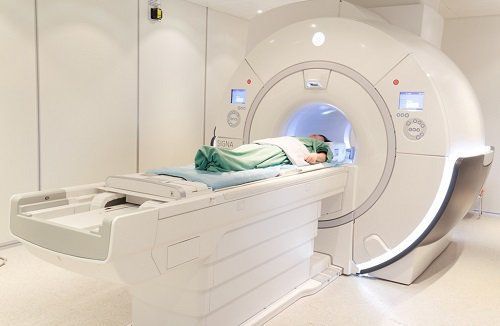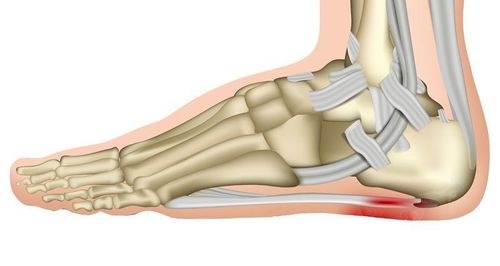This is an automatically translated article.
This article is professionally consulted by Master, Resident Doctor Tran Duc Tuan - Department of Diagnostic Imaging - Vinmec Central Park International General Hospital.The use of contrast in some commonly used imaging techniques brings certain advantages. However, there are still cases of contrast agent anaphylaxis.
1. What is Contrast?
Contrast, also called a contrast agent, is used to improve the image of the inside of the body during X-rays, computed tomography (CT), magnetic resonance imaging (MRI), and ultrasound. Often, contrast medium allows the doctor to distinguish between pathological and non-pathologic conditions.Contrast helps the doctor distinguish the area being examined from the surrounding tissue. By improving the visibility of organs, blood vessels, or tissues, contrast makes it easier for doctors to see if there's a problem.
Contrast enters the body in one of three ways:
Oral Taken through the colon Injected into a blood vessel (venous or arterial) After the contrast is taken, it is absorbed or eliminated by the body through through urine or bowel movements.
2. Contrast drugs
2.1 Compounds based on iodine and barium-sulphate These compounds are used in X-ray and tomography (CT). The contrast material has an iodine chemical structure. This is a naturally occurring chemical element that is injected into a vein or artery, disc or cerebrospinal fluid, or into other body cavities. Barium-sulfate is the most common contrast agent used orally or in other forms including:Powder, mixed with water prior to application Liquid Patches When contrast agents are derived from iodine and barium- When sulfates are present in a specific area of the body, they block or limit the ability of X-rays to pass through. Therefore, the blood vessels, organs and other body tissues that contain these based compounds will change the way controls appear on X-ray or CT images.
Gadolinium is the main component of the contrast agent commonly used in magnetic resonance imaging (MRI). When this substance enters the body, it changes the magnetic properties of nearby water molecules, which enhances the image quality of the MRI.
Saline and air are also used as contrast agents in some imaging techniques.
Microbubbles and microspheres have been used in ultrasound, especially to examine the heart.
3. Diagnosis and management of complications caused by contrast agents

Bạn nên nói với bác sĩ nếu những tác dụng phụ nhẹ của barium-sulfate trước khi chúng trở nên nghiêm trọng
3.1 Barium Sulfate Contrast You should tell your doctor if these mild barium-sulfate side effects get worse or don't go away:
Stomach cramps; Diarrhea; Nausea; Vomit; Constipation. Symptoms of anaphylaxis due to barium-sulfate contrast media:
Urticaria; Itchy; Indians; Swollen throat; Difficulty breathing or swallowing; Hoarseness of voice; agitation; Confusion; heart palpitations; Skin is bluish. You are at risk for an adverse reaction to barium-sulfate if:
Have a history of asthma, hay fever or other allergies, which will increase your risk of an allergic reaction to the additives in barium- sulfate. Having cystic fibrosis, which increases the risk of a blockage in the small intestine. Severe dehydration, which can cause severe constipation. Intestinal obstruction or perforation aggravated by a barium-sulphate agent. 3.2 Iodine Contrast Mild reactions include:
Nausea and vomiting; Headache; Itchy; There is a flush of the face; Mild skin rash or hives. Moderate reactions include:
Severe skin rash or hives; Wheezing; Irregular heartbeat; High or low blood pressure; Shortness of breath. Anaphylactic reactions include:
Difficulty breathing; Heart stop; Swelling of the throat or other parts of the body; Convulsions; Low blood pressure. There is a very small percentage of patients who may experience delayed reactions, so a rash may occur several hours to several days after an iodinated contrast medium.

Khó thở, ngừng tim là những dấu hiệu của sốc phản vệ
Your doctor may use additional beta agonists such as albuterol to make breathing easier. In addition, the patient will be given oxygen to help the body get the necessary amount of oxygen. If the patient has any further complications from anaphylaxis, they will also be treated.
Contrast anaphylaxis is very dangerous if not handled promptly, so you should choose a reputable medical facility to perform X-ray, MRI or ultrasound using contrast. Vinmec International General Hospital is one of the hospitals that not only ensures professional quality with a team of leading doctors, modern equipment and technology, but also stands out for its examination and consulting services. and comprehensive, professional medical treatment; civilized, polite, safe and sterile medical examination and treatment space.
Master, Doctor Tran Duc Tuan is well-trained in the country and many centers have prestigious medical background in the world such as: Australia, Singapore, Thailand... The doctor has many years of experience in the field of medicine. imaging and endovascular and extravascular interventions. Currently, the doctor is working at the Department of Diagnostic Imaging and Interventional Vascular Unit - Vinmec Central Park International General Hospital.
Customers can directly go to Vinmec Health system nationwide to visit or contact the hotline here for support.
References: radiologyinfo.org
MORE:
Contrast allergy: What to know Recognizing signs of anaphylaxis What to prepare for a contrast-enhanced magnetic resonance imaging (MRI) scan














